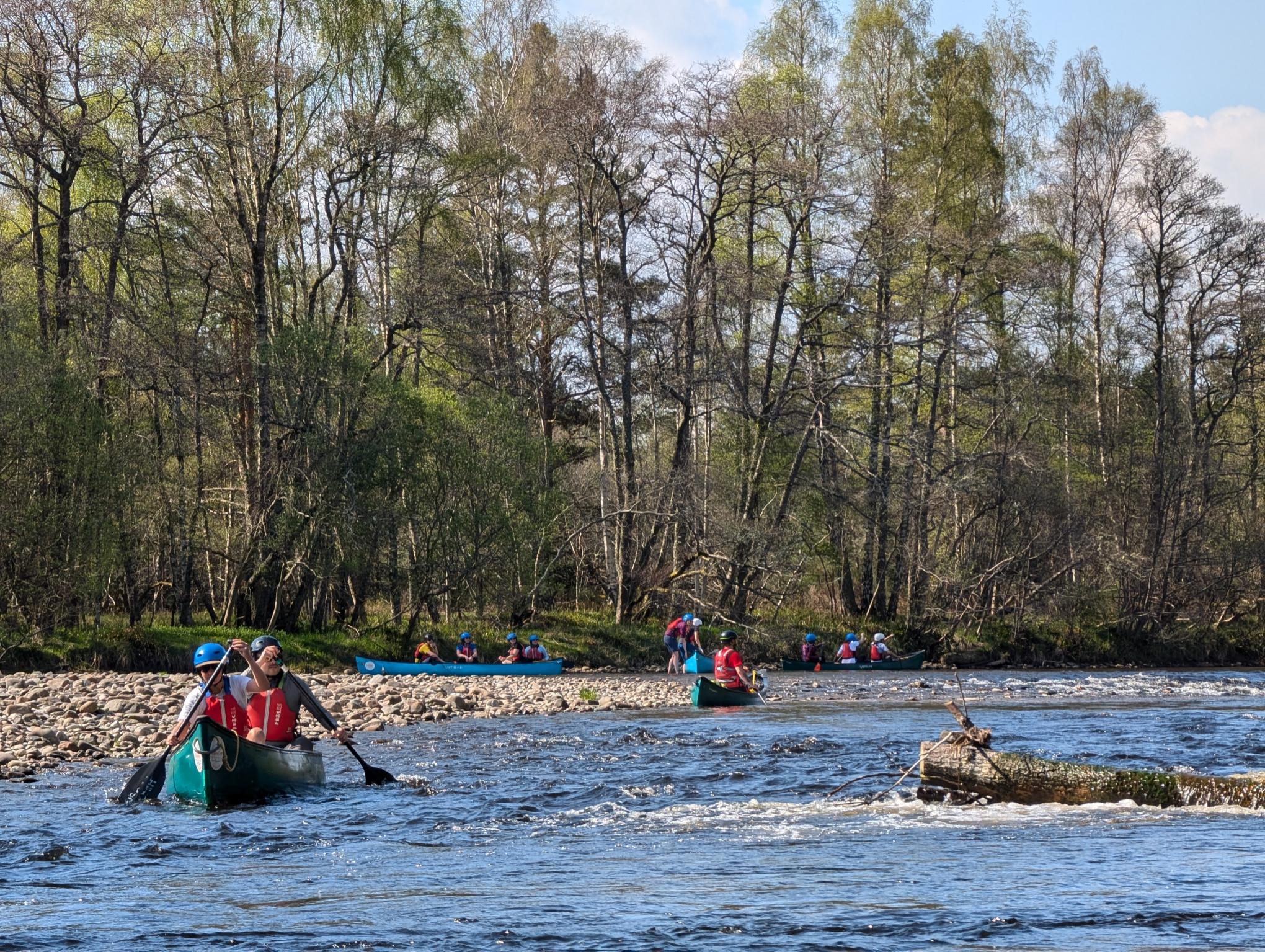
The River Spey is not the longest river in Scotland, but it is the fastest flowing. This 108-mile (172km) waterway is inseparable from Scottish history and lore, rising at Loch Spey in the Corrieyairack Forest and running beneath the mountains and ancient Caledonian forests of the Cairngorms National Park, out to the North Sea. The spey is a river known by anglers for the salmon and trout, by whisky drinkers as a stronghold, home to more than 50 distilleries (and roughly 50% of Scotland’s whisky production) and by hikers and paddlers as the river that runs through the outdoor hub of Aviemore, gateway to the Cairngorms, and one of Scotland’s great beauty spots.
We paddle past Scots pines. Buzzards circle above our canoe and forests and mountains layer and lap into the distance behind.
On a day like today, with blue skies and the sun splashed across the water of the river, the Spey is a Highland dream. We paddle past Scots pines, while buzzards circle above our canoe and forests and mountains layer and lap into the distance behind. The weather is not like this everyday in Scotland (you will be surprised to hear), but as a Scot, I dare say such days as this are not as rare as some think.
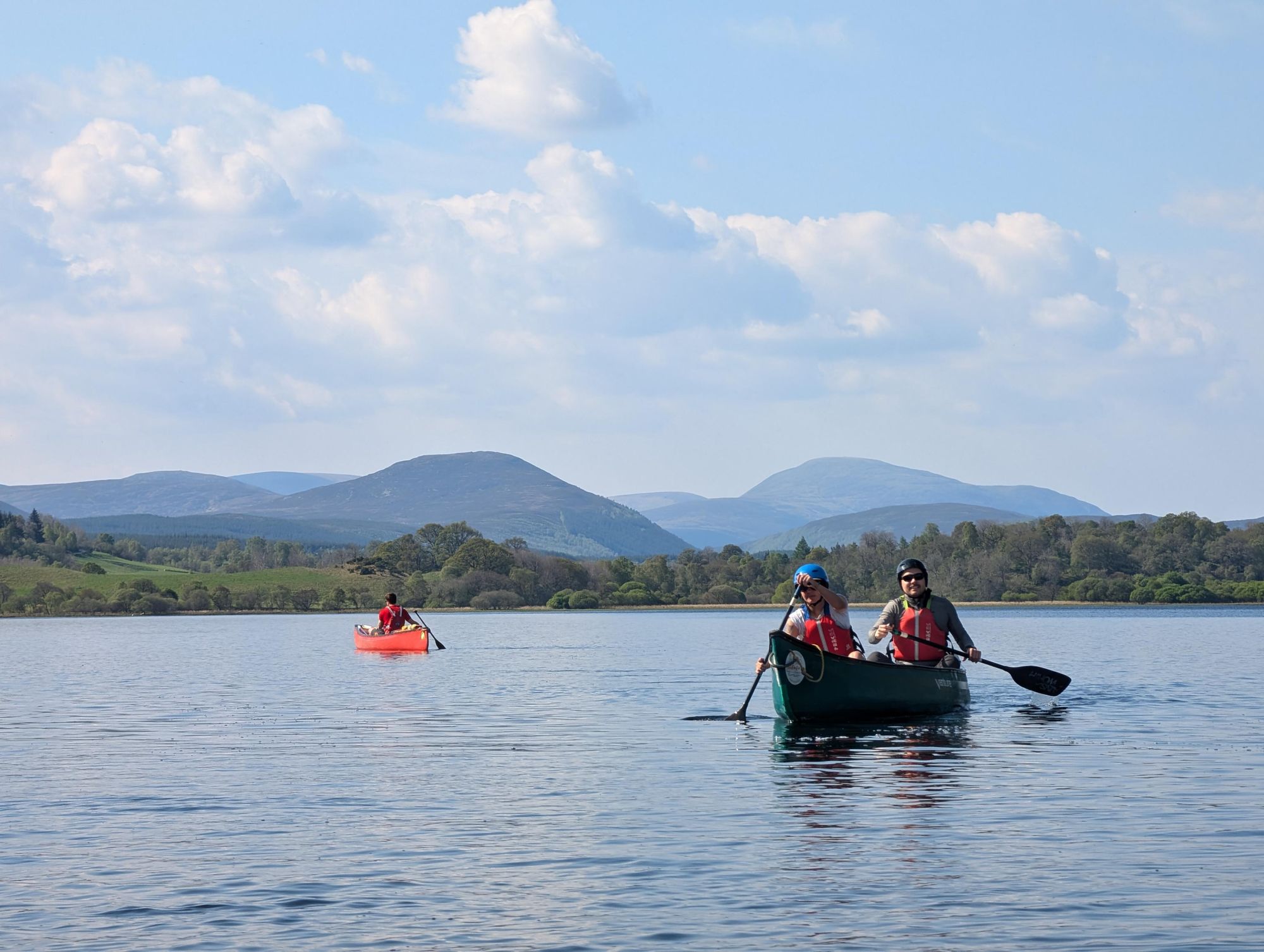
I’m here in the Cairngorms to paddle a scenic section of this storied river. Specifically, I’m paddling downstream, through the greenery and rapids of the Spey, to get a snapshot of Much Better Adventures’ Summit to Sea Expedition in Scotland - which guides paddlers all the way along the Spey, out to the east coast and North Sea (as well as hiking to the top of the 1,245m/4,084ft Cairn Gorm).
“We start from Nethy Bridge,” says Scott McCartney, my guide for the venture. He's lived in the Cairngorms for 17 years. "It takes three and a bit days to paddle along the Spey until you get to Spey Bay, where it meets the sea.
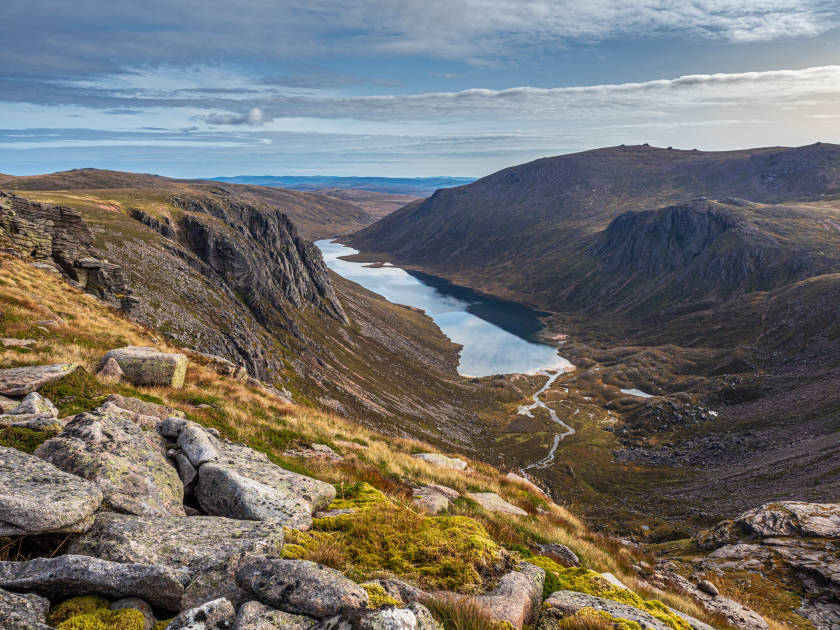
“You get to see a whole change of geography on the trip; starting up in the mountains, then paddling and seeing the scenery get flatter and flatter until it gets to the sea. You can see the wildlife changes when you get to the estuary too - you often get seals swimming up the river or the sea beds. Sometimes, if you're really lucky, you can actually see dolphins when you come out at the sea.”
We’re too far in-land for to spot dolphins on this trip, but I can vouch for Scott's word. I've seen dolphins on the northeast coast before. First you catch a glimpse of a dark fin, the next you find yourself watching a whole pod playing around.
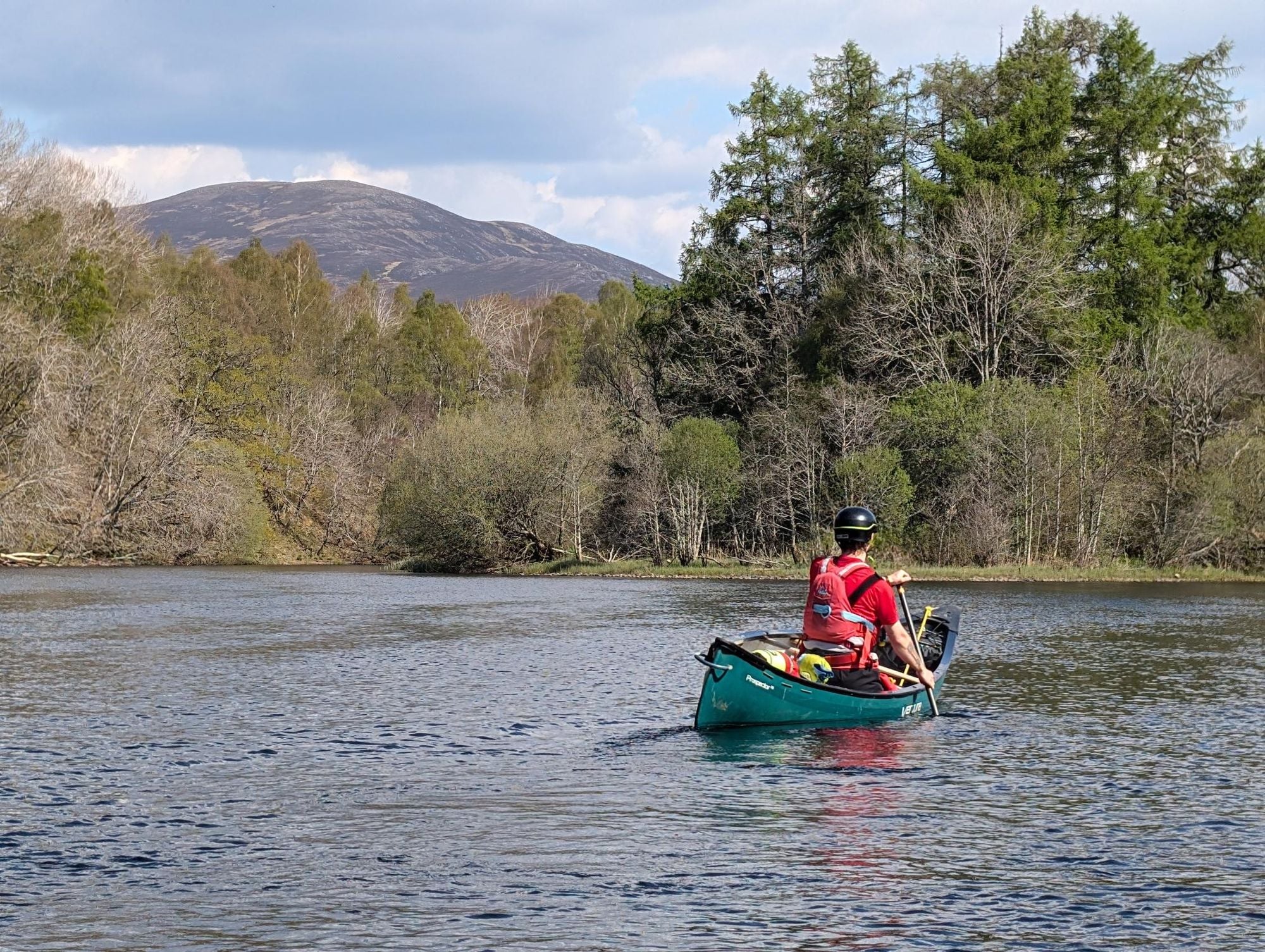
We’ve started our day in Loch Insh, a beautiful body of water backdropped by dark green forests and summits. Hidden amongst those distant trees are the Uath Lochans, a collection of lochans (like large ponds) connected by boardwalks. It’s an area of sublime beauty, perfect for showing off the Cairngorms to family or friends who don’t want to hike all day to earn big views.
As we paddle out of Loch Insh and join the Spey, our guide points out an Osprey nest in the trees. The nest is not currently active, but locals are watching closely to see if the usual residents will return from West Africa. There are other birds around - squeaking oystercatchers and goldeneye ducks flying overhead.
The water is low on the river during our visit, and the current is running quick. Having familiarised ourselves with the paddling motion, we manoeuvre our way around islands in the water, pass under bridges, and soon, are paddling into rapids; our boat angled at 45 degrees to allow us to catch the flow of the water.
It is tranquil on the river; the rhythmic paddling slowing busy minds and demanding that you think no further than the surrounding scenery.
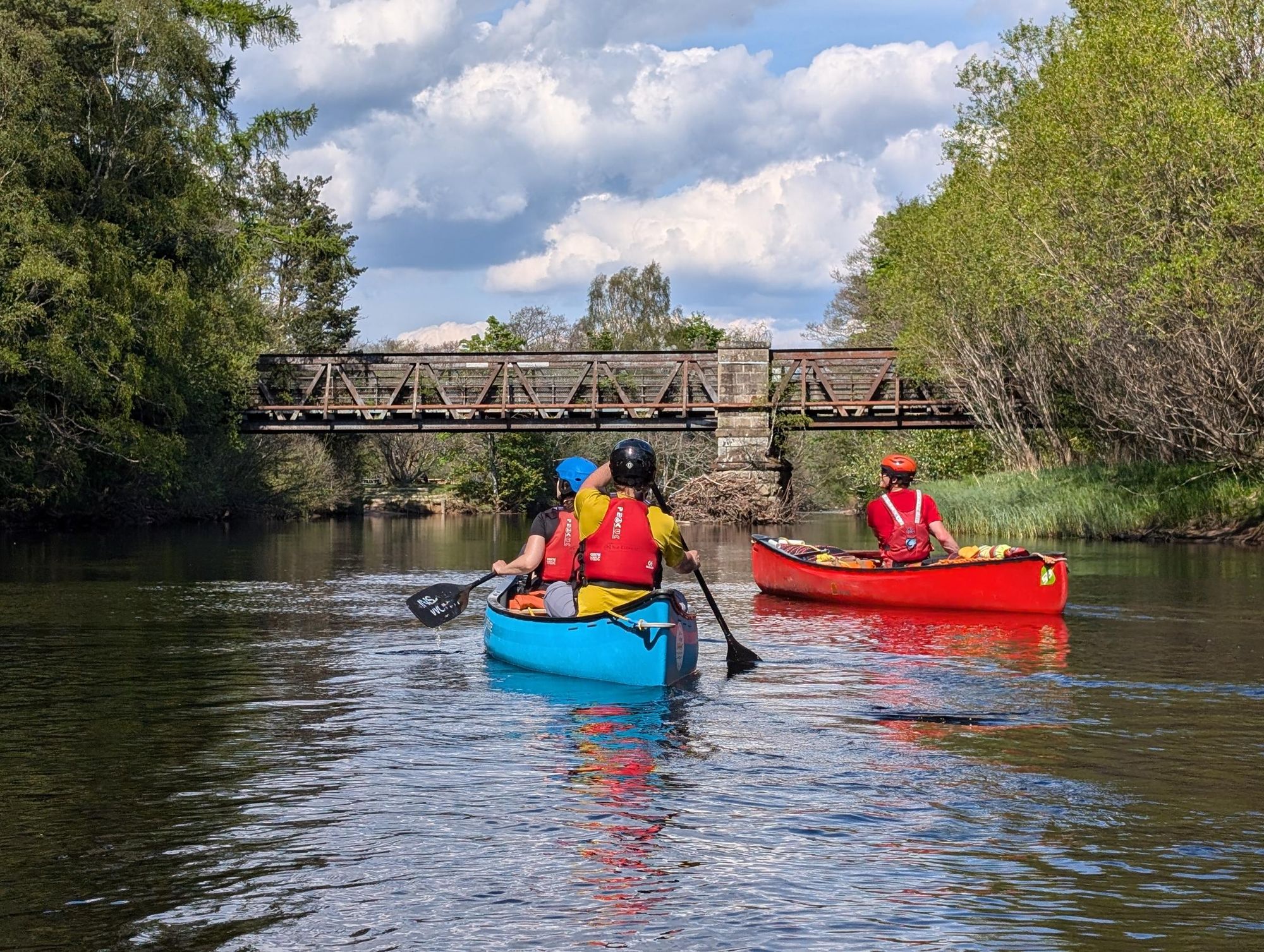
Around us, a mosaic landscape of native Scots pines - remnants of the legendary, ancient Caledonian Forest of the past - rises up around a mess of deciduous birch, alder, oak, hazel and willow trees. When the treeline relents, the views reach out over the farmland and the Cairngorm Munros in the distance shine.
When you have climbed the peaks of the Cairngorms, such views send the imagination soaring - and the day previous, we had done exactly that.
You've got amazing views of the Cairngorms, one of the wildest places in the UK and one of the only Arctic tundras here.
“Usually, people are surprised,” says Scott, of the landscape. “They have their expectations, which are usually quite good, but more often than not, this place exceeds expectations. It's just everything about it - the wilderness; the beauty; the wildlife. It's really hard to pinpoint. It’s such a fun playground.”
Our hike had been a morning ascent up over open moor, on exposed trail and scrambly boulder fields. We spotted the Cairngorm reindeer herd pottering around, while on our descent, we were in forest - passing oak and juniper, getting up close to Scots pines and blaeberry bushes on the verge of giving fruit.
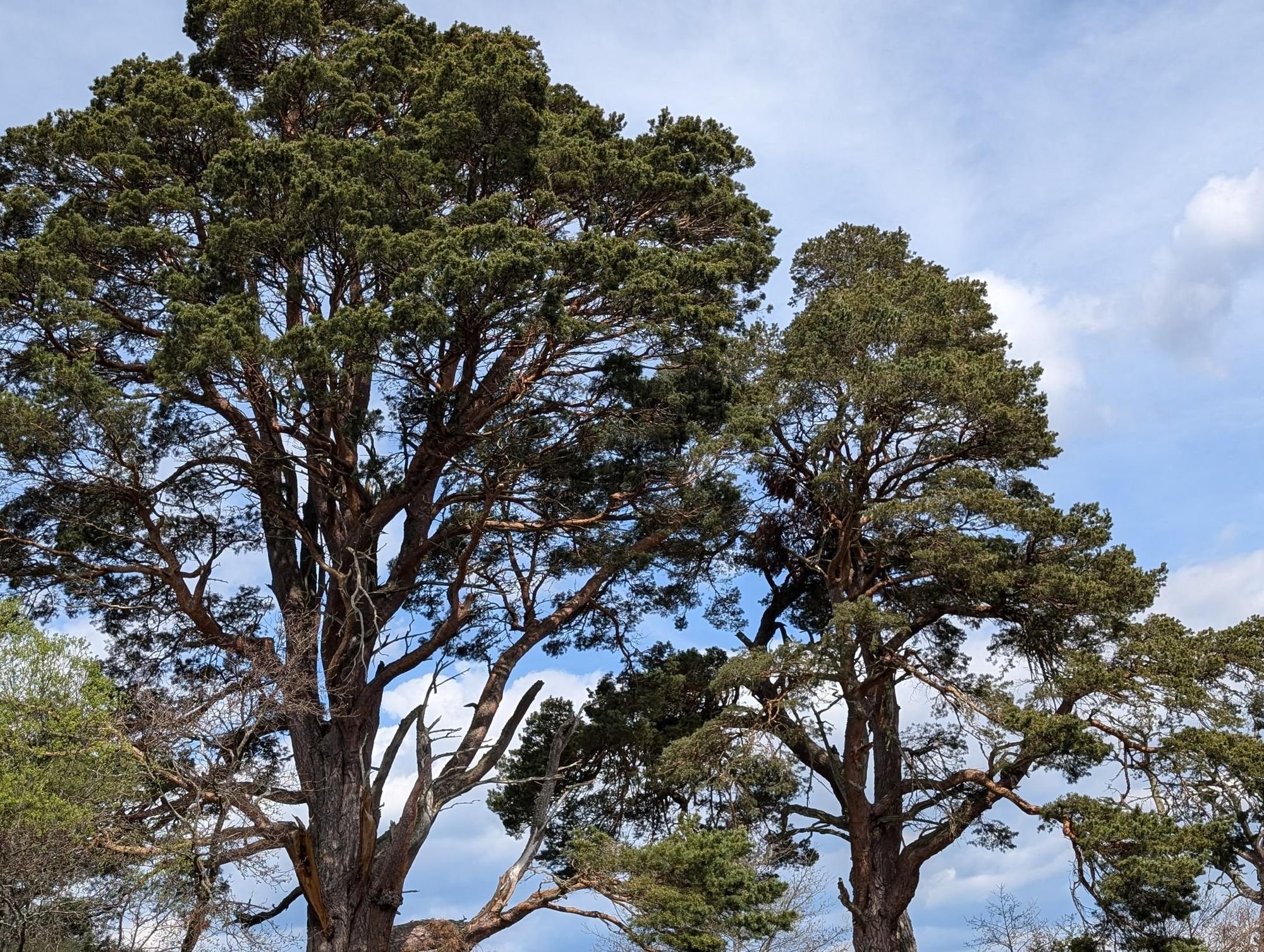
It is impossible to write of the Cairngorms and not mention Nan Shepherd, the writer who adorns the £5 note in Scotland. Her profound memoir The Living Mountain is the quintessential text on this mountain range, and to many, on the wider experience of existing within nature. “When the aromatic savour of the pine goes searching into the deepest recesses of my lungs, I know it is life that is entering," she wrote. "I draw life in through the delicate hairs of my nostrils.”
Shepherd described "circus walkers" who hike to plant flags on summits as "sterile", noting that "to aim for the highest point is not the only way to climb a mountain." She stated that "the short-sighted cannot love mountains as the long-sighted do," and as I climb with this in mind, the ancient history of this landscape - of fallen boulders, root networks and a plateau stretched by time - humbles.

Our high point was Creag a Chalamain, a 787m (2,582ft) peak. The view is out over undulating moorland which slopes up gradually, thousands of metres, and plummets back down in sharp, rugged cliffs, hiding deep glens from view. A single path is visible running through it. The low flats here are surrounded by Munros - the famous 3,000ft (914.4m) peaks of Scotland. There are 282 Munros in Scotland in total, and 55 of them are in the Cairngorms National Park.
On the full Summit to Sea Expedition, guests climb the mountain which gives the surrounding range and national park its name - the mighty Cairn Gorm.
The fact that this mountain - and these hills - are called ‘Cairn Gorm’ sums up the changing nature of the landscape in this national park. The Gaelic Càrn Gorm actually translates as ‘Blue Hill’, but gorm also relates to green and so, it can be interpreted as ‘Green Hill’. The old local name for the mountains here was actually Am Monadh Ruadh - the Red Mountains - for the rocks and the sunsets.
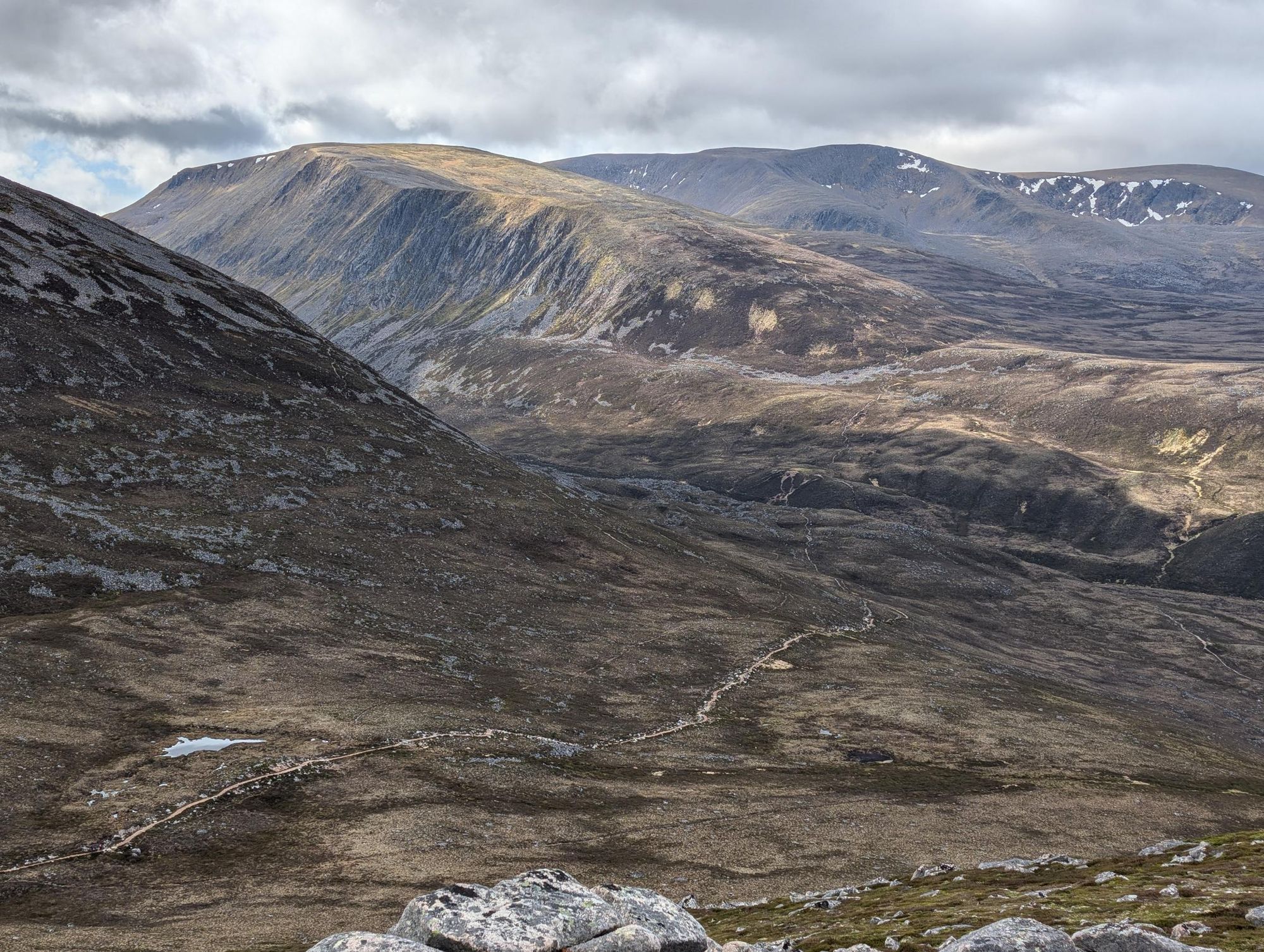
The only thing certain, perhaps, is that this landscape is one of multitudes.
“Cairn Gorm is great,” says Scott. “It’s the fifth highest mountain in the UK - so you're bagging that, which is cool. You've got amazing views of the Cairngorms, one of the wildest places in the UK and one of the only Arctic tundras here.”
This loch, because of the granite in the Cairngorms, is completely crystal clear blue waters...
The view from the top of Cairn Gorm is spectacular, looking out across the Cairngorm plateau towards Ben Macdui (1,309m/4,295ft), the second highest mountain in the UK. On a clear day, you can see all the way up to the far north of Scotland; to the mountains around Ullapool, while beneath the peak, the hills slope down to lochs, one of which, Loch A’an, Scott finds particularly beautiful.
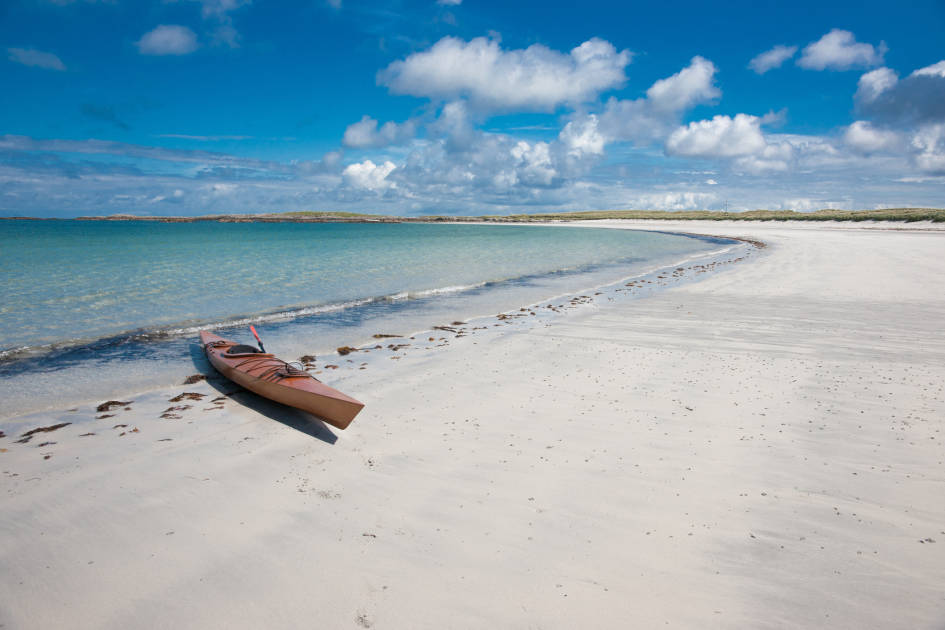
“The walk down, as you start getting more remote, is where it gets really spectacular,” says Scott. “You've got a really interesting route. It’s not quite a scramble, but it leads you down to the beautiful Loch A'an, which is different from any other loch in Scotland. Most lochs in Scotland are peaty; so they're brown - still clean, but quite brown - but this loch, because of the granite in the Cairngorms, is completely crystal clear blue waters, and there's even a couple of sandy beaches. It's one of the most spectacular places in Scotland in my opinion.
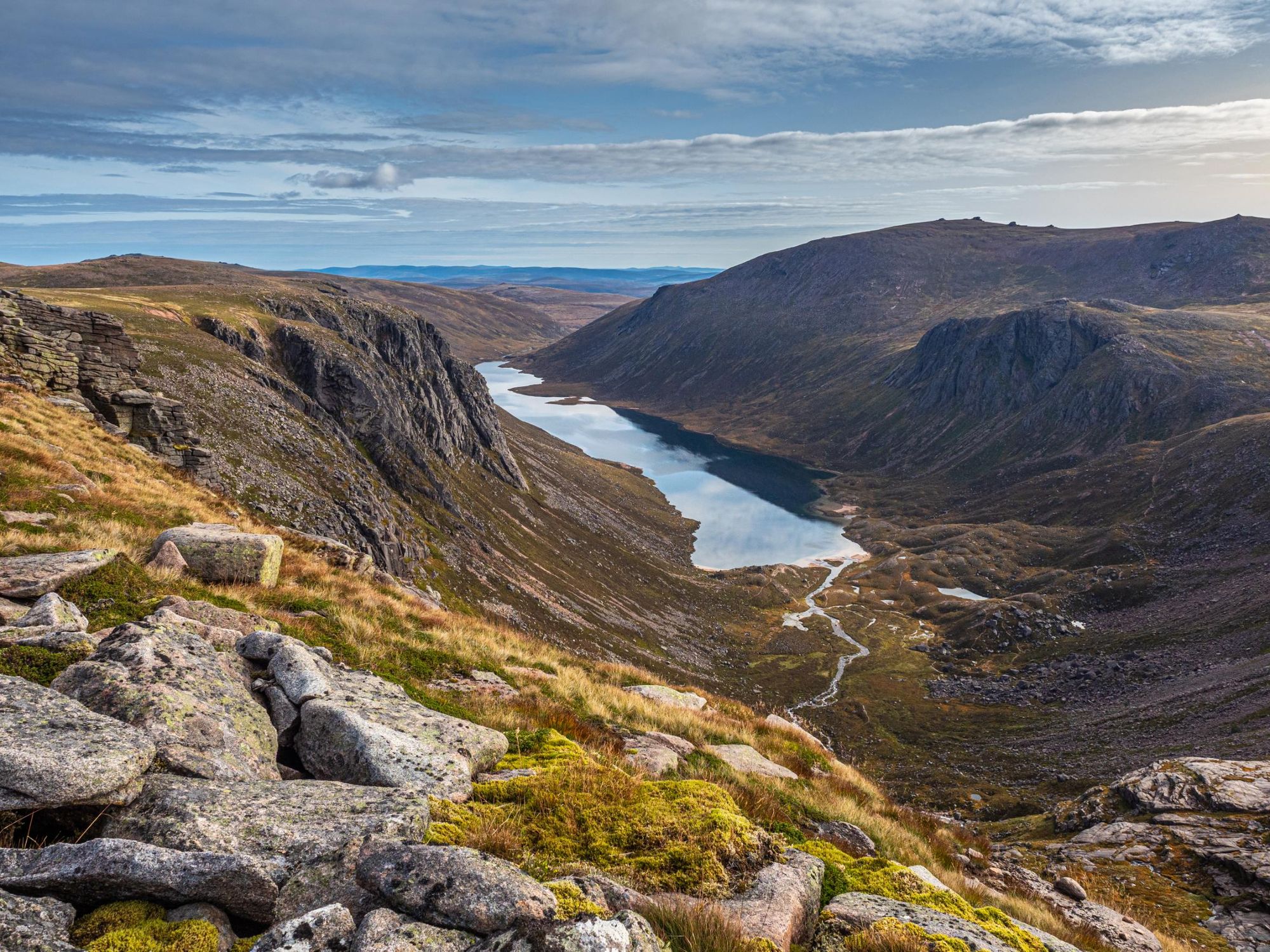
“Once we get over the backside of Cairngorm, we go around the eastern edge of it, until we get into Abernethy Forest, which is another beautiful forest with ancient Caledonian Pine, and then we lead them down to the river, find the boats and then paddle out to the sea.”
Back in our canoe on the River Spey, the sun continues to shine. I drape my arms over the sides of the boat when we take a break from paddling and let the river cool my hands. As Nan Shepherd wrote: “in heat the freshness of the water slides over the skin like shadow.”
There is something deeply addictive about the act of paddling - the birds chirping around us and the greenery refreshing with every turn of the corner.
In the days that follow we will drink whisky made on the banks of the river, we'll eat lunch on the grassy verges and fall asleep to the sound of its current.
When we leave, the sky is still spotless blue. It's not hard to believe that dolphins are jumping in the estuary downstream on a day like this, where this romantic river tips into the Spey Bay, beyond the shingle beaches of the glimmering coast.
Inspired? Check out our Summit to Sea Expedition in the Cairngorms!


